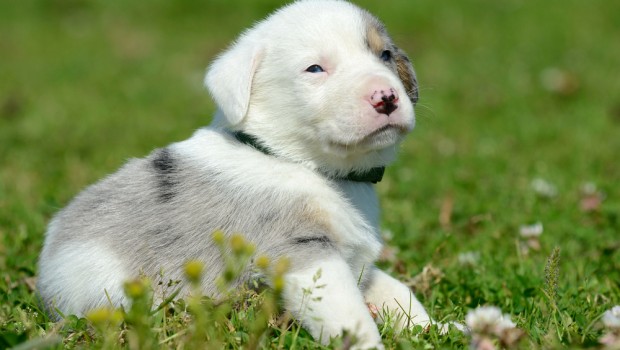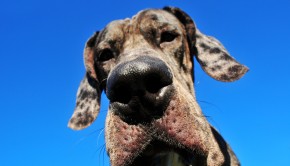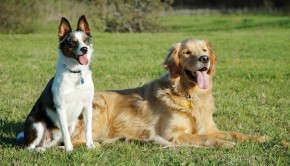Dog Flea Allergy Dermatitis, Hot Spots, and Ringworm
The most common allergic skin disease in the dog develops when certain dogs become hypersensitive to flea bites. The allergic agent is contained in the saliva or mouthparts of the flea and is injected into the dog when the flea feeds. The disease usually occurs during the warm months and is commonly called ‘summer eczema’.
The disease begins near the tail-head of the rump of the dog. The animal will scratch or rub this area intensely, causing the hair to fall out and often ulcerating the skin. In severe cases, the hair loss can become more generalized and involve large areas of the body.
Although the disease occurs more commonly in the summer months, many dogs will show signs constantly throughout the year. The flea can complete its life cycle in the home environment and thus can cause constant irritation to hypersensitive dogs.
Therapy is aimed at flea control on the dog, on other pets, and in the dog’s environment. In addition, specific therapy can be instituted to control the signs and affected dogs. Cortisone-type drugs will relieve the symptoms of the allergic reaction. Injections of flea allergy extracts have also been useful in helping certain dogs with their flea allergy.
Hot Spots
Hot spots, known medically as ‘Acute Moist Dermatitis’, is a troublesome skin condition in certain longhair breeds of dogs including Saint Bernards, Newfoundlands, Malamutes, Collies, and German Shepherds. Many types of skin irritation can cause the dog to inflict self-trauma on the skin. A cycle of itch/scratch, itch/scratch, itch/scratch develops.
Round, moist ulcerated areas are created in the skin by the dog’s licking, chewing, or scratching. Flea bites, flea allergy, and burs in the coat are common causes of hot spots. In certain cases, the underlying cause can never be found.
Therapy is directed at removing the underlying cause, breaking the itch/scratch, itch/scratch cycle, and effectively drying up the ulcerated area. Small hotspots may be treated at home with preparations that are drying and soothing to the skin. Products that contain camphor or menthol have these effects. Vinegar is a mild astringent which also will dry the affected areas. Large areas, however, are best to be treated by your veterinarian.
Ringworm
Ringworm, medically referred to as ‘Dermatomycosis’, is a fungus infection of the skin, most commonly found in young animals. Circular or irregular areas of hair loss occur on the face, body, and legs. The skin in affected areas is usually dry and scaly. This disease can be transmitted from animal to animal, from soil to the animal, and from animal to man.
Definitive diagnosis is best achieved through culture and identification of the fungal agent. Many chronic diseases that do not readily respond to treatment are mistakenly diagnosed as fungal infections. These mistakes can be avoided by the use of fungal cultures. Therapy is specific and will result in a complete remission of the disease. Topical and systemic drugs are used.






